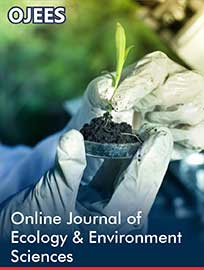 Opinion
Opinion
Fire Forest
Carlos Arturo Peña Rincón, UniversidadSergio Arboleda, Bogotá, Colombia
Received Date:February 11, 2024; Published Date:March 26, 2024
Opinion
Terrestrial ecosystems play a crucial role as living indicators, being sensitive to negative impacts such as heat points detected by NASA’s Disaster Mapping Portal. These impacts are observed across various latitudes, where unusually high temperatures exceeding historical values have been recorded on continents such as America, Africa, and Asia. Temperature has been a determining factor in the occurrence of forest fires during the first 40 days of the current year.
Undoubtedly, the persistent occurrence of forest fires has triggered a positive feedback loop between carbon emissions and the fire season, as suggested by Global Forest Watch. Furthermore, human activities have weakened the vulnerability of forest cover in Tropical and Boreal regions, with the latter being more predominant. Records of tree cover loss between 2002 and 2022 in the tropical region, according to the World Resources Institute, reveal an alarming scenario: the highest loss coincided in 2016 with a global temperature increase of 2 degrees Celsius, according to the World Meteorological Organization. This alerts to the cost that ecosystems assume in the Anthropocene geological era.
Additionally, other impacts have been observed in urban areas, where biomass burning has affected air quality, exceeding the recommended quality standards by the World Health Organization. In response, the use of face masks, mobility restrictions, emergency, and contingency plans have been activated in cities. This year in Colombia, the situation reached a maximum alert in 883 municipalities, requiring even the collaboration of private companies and international support, such as the Guardian Air Force Firefighting System from Peru, which helped control fires in the hills of Bogotá. In Brazil, in the early days of 2024, the scenario of forest fires in the Amazon reached 2049 events, doubling this record compared to the previous year’s beginning; however, the heat points reported by the National Institute of Space Research were not higher than those recorded in 2016, a possible cause of this increase in fires is the severe drought attributed to the effects of the El Niño phenomenon.
Furthermore, in Chile, not only were losses of vegetation cover and infrastructure reported but also hundreds of human casualties. Forest fires exceeded all available response strategies in terms of human and technical resources; the capacity to devour everything in its path was swift, leaving us mere spectators of how everything disappeared, leaving only questions about the failures in the response and fire control system, as well as the responsibilities of local and regional leaders.
The scale of events of this nature reported every year presents more challenges in each stage of knowledge, reduction, and disaster management. Each stage has specific scopes, but when the threat materializes, an additional stage is added, that of ecological restoration according to the severity of the fire, which must be measured to determine the best viable strategy to help ecosystem resilience.
In this fabric of disaster risks, it is crucial to strengthen the underlying factors that bolster the response system. This includes consolidating coordination between institutions, specific and international cooperating agents, and appropriate community preparedness in identified high-threat areas. Likewise, constant monitoring in areas identified by historical events and hotspots is fundamental. Finally, only through genuine interest in connecting with the land can we build smart territories that guarantee food security and harmonious coexistence on our blue planet.
-
Carlos Arturo Peña Rincón*. Fire Forest. Online J Ecol Environ Sci. 2(2): 2024. OJEES.MS.ID.000528.
-
Ecosystems; Temperature; Global Forest; High-threat areas; Territories; Firefighting
-

This work is licensed under a Creative Commons Attribution-NonCommercial 4.0 International License.






